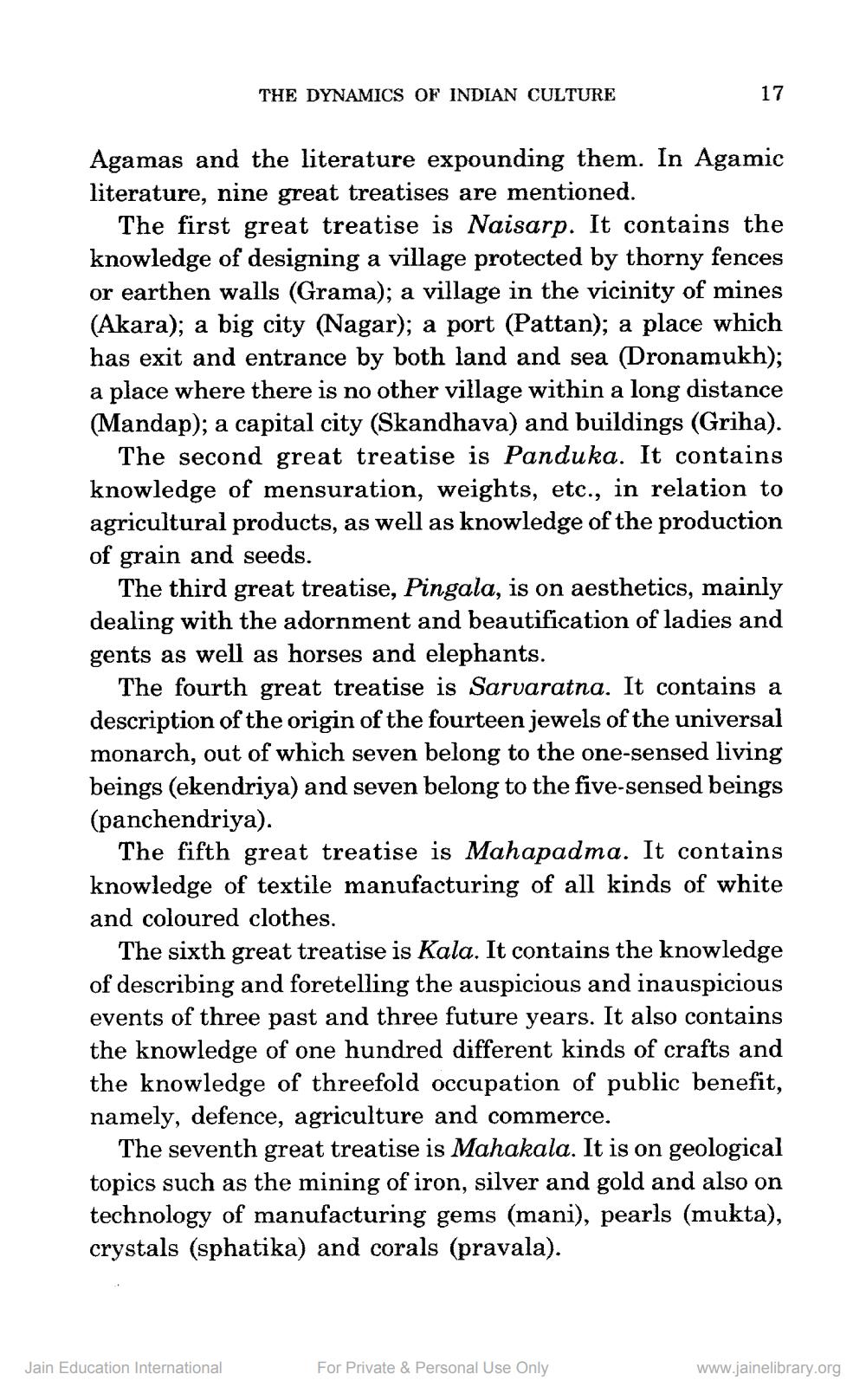________________
THE DYNAMICS OF INDIAN CULTURE
17
Agamas and the literature expounding them. In Agamic literature, nine great treatises are mentioned.
The first great treatise is Naisarp. It contains the knowledge of designing a village protected by thorny fences or earthen walls (Grama); a village in the vicinity of mines (Akara); a big city (Nagar); a port (Pattan); a place which has exit and entrance by both land and sea (Dronamukh); a place where there is no other village within a long distance (Mandap); a capital city (Skandhava) and buildings (Griha).
The second great treatise is Panduka. It contains knowledge of mensuration, weights, etc., in relation to agricultural products, as well as knowledge of the production of grain and seeds.
The third great treatise, Pingala, is on aesthetics, mainly dealing with the adornment and beautification of ladies and gents as well as horses and elephants.
The fourth great treatise is Sarvaratna. It contains a description of the origin of the fourteen jewels of the universal monarch, out of which seven belong to the one-sensed living beings (ekendriya) and seven belong to the five-sensed beings (panchendriya).
The fifth great treatise is Mahapadma. It contains knowledge of textile manufacturing of all kinds of white and coloured clothes.
The sixth great treatise is Kala. It contains the knowledge of describing and foretelling the auspicious and inauspicious events of three past and three future years. It also contains the knowledge of one hundred different kinds of crafts and the knowledge of threefold occupation of public benefit, namely, defence, agriculture and commerce.
The seventh great treatise is Mahakala. It is on geological topics such as the mining of iron, silver and gold and also on technology of manufacturing gems (mani), pearls (mukta), crystals (sphatika) and corals (pravala).
Jain Education International
For Private & Personal Use Only
www.jainelibrary.org




